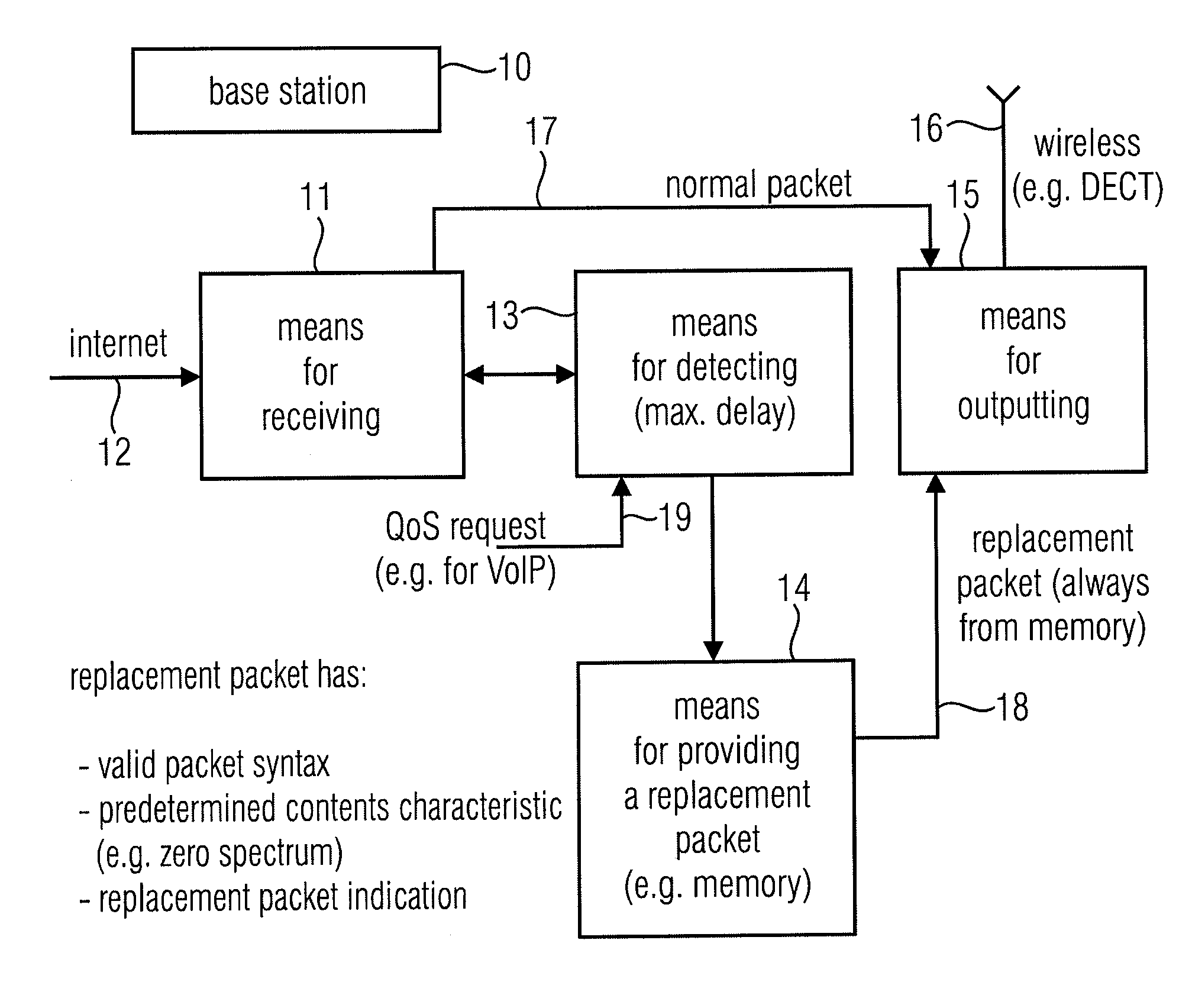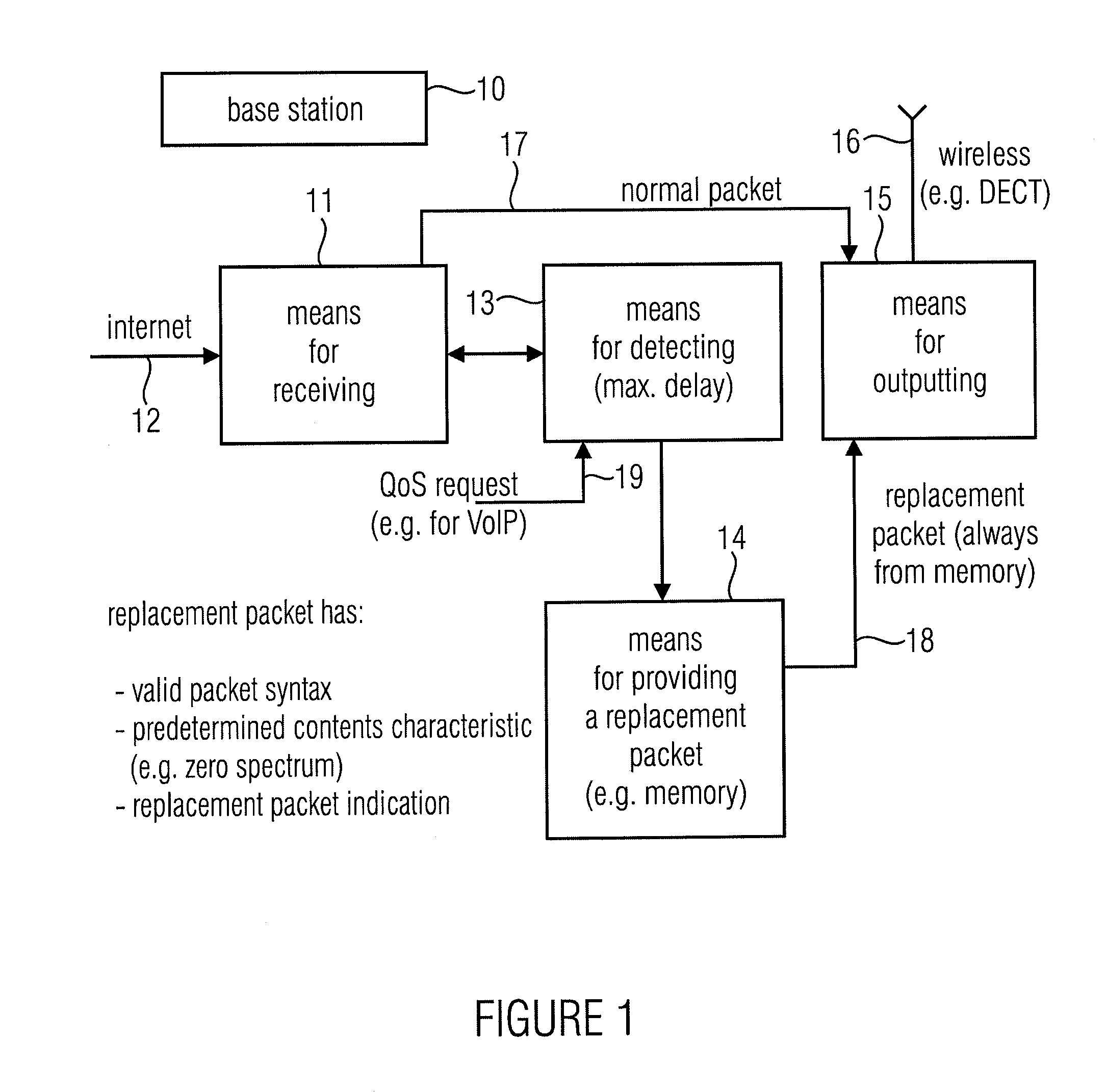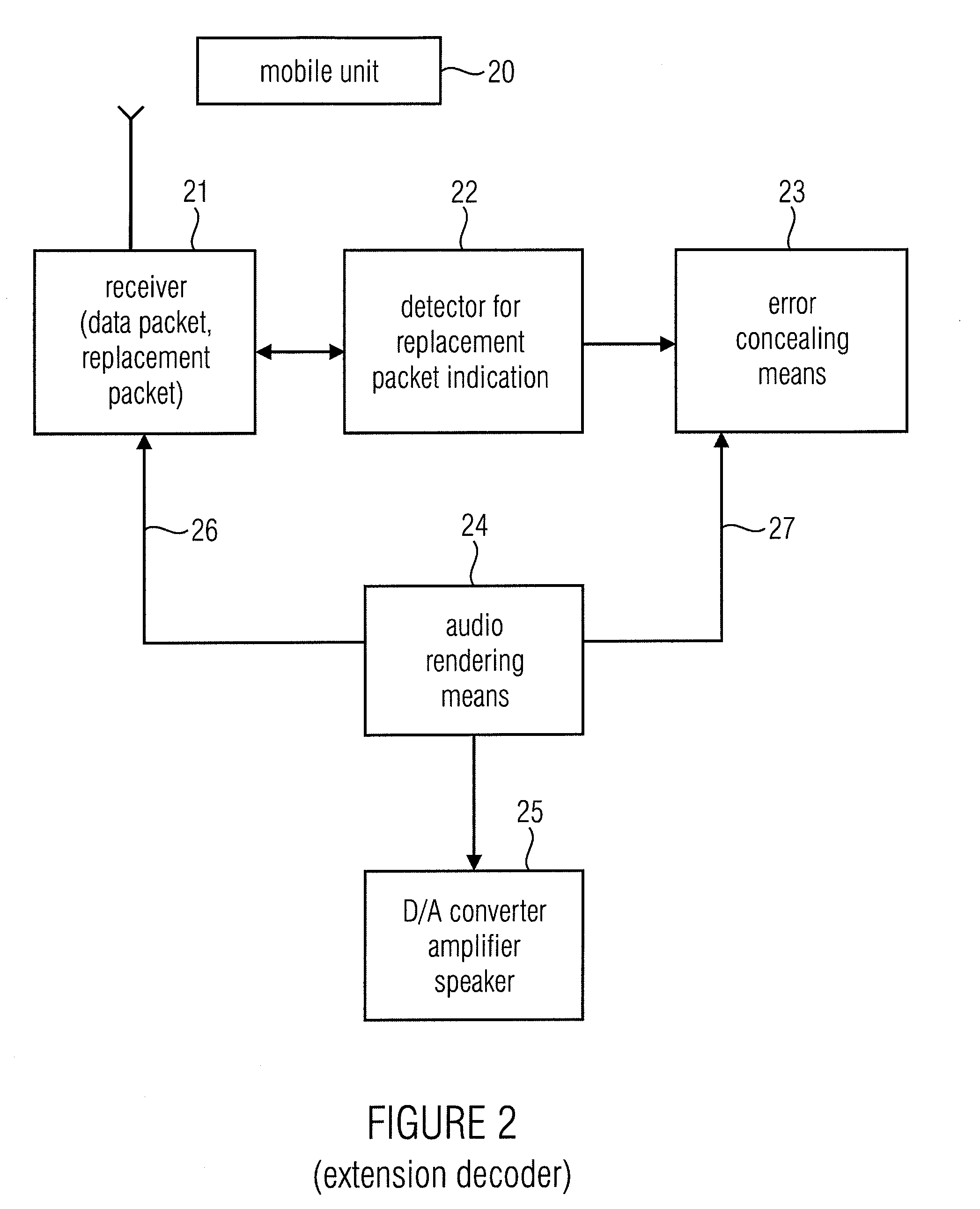Apparatus and Method for Transmitting a Sequence of Data Packets and Decoder and Apparatus for Decoding a Sequence of Data Packets
a data packet and sequence technology, applied in the field of data communication applications, can solve the problems of packet loss, packet loss, packet loss, etc., and achieve the effect of quality loss
- Summary
- Abstract
- Description
- Claims
- Application Information
AI Technical Summary
Benefits of technology
Problems solved by technology
Method used
Image
Examples
Embodiment Construction
[0033]FIG. 1 shows an apparatus for transmitting a sequence of data packets which represent an audio signal. The apparatus for transmitting, which in FIG. 1 is exemplarily implemented as a base station 10, includes means 11 for receiving packets of the sequence, a packet syntax being specified for the packets. The means 11 for receiving is exemplarily connected to a packet-oriented transmission network, like, for example, the Internet 12. Additionally, the base station 10 includes means 13 for detecting whether a packet of the sequence of packets is missing or faulty. Furthermore, means 14 for providing a replacement packet is provided in order to replace the faulty packet or missing packet. The replacement packet is a valid packet with regard to the packet syntax, however the audio contents of the replacement packet have a predetermined contents characteristic. In addition, the base station includes means 15 for outputting the sequence of packets, the sequence of packets comprising...
PUM
 Login to View More
Login to View More Abstract
Description
Claims
Application Information
 Login to View More
Login to View More - R&D
- Intellectual Property
- Life Sciences
- Materials
- Tech Scout
- Unparalleled Data Quality
- Higher Quality Content
- 60% Fewer Hallucinations
Browse by: Latest US Patents, China's latest patents, Technical Efficacy Thesaurus, Application Domain, Technology Topic, Popular Technical Reports.
© 2025 PatSnap. All rights reserved.Legal|Privacy policy|Modern Slavery Act Transparency Statement|Sitemap|About US| Contact US: help@patsnap.com



